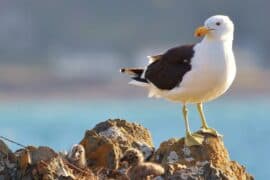Choristoneura fumiferana
(Choristoneura fumiferana)
Description
Choristoneura fumiferana, the eastern spruce budworm, is a species of moth of the family Tortricidae. It is also commonly referred to as the spruce budworm. It is one of the most destructive native insects in the northern spruce and fir forests of the eastern United States and Canada. Its range is also the widest of all the budworm species. Eastern spruce budworm populations can experience significant oscillations. During outbreaks, populations grow to extremely high densities, compared to the relatively low levels that occur in between. These outbreaks are highly destructive and can cause both economic and ecological damage. As a result, methods of control are utilized. Several theories exist regarding these cyclical outbreaks: association with balsam fir maturation, catastrophe theory, dispersal from an epicenter, and oscillations synchronized by entrainment. The first recorded outbreak of the spruce budworm in the United States occurred in Maine in about 1807. Another outbreak followed in 1878. Since 1909 there have been waves of budworm outbreaks throughout the eastern United States and Canada. The states most often affected are Maine, New Hampshire, New York, Michigan, Minnesota, and Wisconsin. These outbreaks have resulted in the loss of millions of cords of spruce and fir. In 20th-century eastern Canada, the major outbreaks occurred in periods circa 1910–20, c. 1940–50, and c. 1970–80. These outbreaks impacted, respectively, 10, 25, and 57 million hectares of forest. Longer-term tree-ring studies suggest that spruce budworm outbreaks have been recurring approximately every three decades since the 16th century. Paleoecological studies suggest the spruce budworm has been breaking out in eastern North America for thousands of years. The spruce budworm disperse locally after hatching and practice more long-range migration as adults to avoid harsh weather conditions. While moving through the life cycle stages of egg, caterpillar, pupa, and adult, this species risks attack from predators including birds and spiders as well as numerous parasitoids. During mating, females release sex pheromones to attract males. After a mate has been successfully attracted, the males deliver a nuptial gift to the female during copulation.
Taxonomic tree:







